

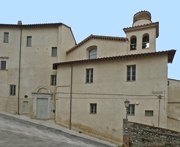
The church of San Magno was first documented in 1179, when Bishop Pietro of Amelia conceded it, together with the hospice of San Giacomo de Redere, to the Abbazia di San Paolo fuori le Mura, Rome. (The hospice of San Giacomo had been established in 1156 by a lay confraternity on a site about 1.5 km outside Porta Posterla). A community of Benedictine nuns was established at San Magno in the 13th century, under the auspices of San Paolo fuori le Mura, in order to administer the hospice.
In 1399, at the behest of Pope Boniface IX, the Monastero di San Magno merged with the Monastero di Santa Maria da Canale, a nunnery outside Amelia that also belonged to Abbazia di San Paolo fuori le Mura. In 1426, Bishop Filippo Ventorelli arranged for almost all of the nuns to be concentrated at San Magno. However, some chose instead to move to the Monastero di Santo Stefano.
The hospice of San Giacomo fell into disuse and the site was passed to the Cappuchins in ca. 1550.
Two of the daughters of the artist Giacinto Gimignani were nuns at San Magno in the 17th century.
Blessed Placido Riccardi was sent from San Paolo Fuore le Mure to serve as the nuns' chaplain in the period 1877-87.
The convent was largely rebuilt in the 15th century and the church was remodelled in 1624. The complex has recently been restored. The nunnery is now the home of six nuns, and their church is open for Mass at 8am every day.
The nuns celebrate the feast of St Magnus on August 19th. This suggests that the church is dedicated to St Magnus of Anagni, whose entry in the Roman Martyrology describes him as a bishop who was martyred under the Emperor Decius. The hagiography of this saint is unreliable.
Exterior
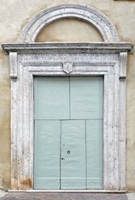
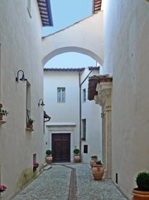
The portal (17th century) in Via Posterola leads to a narrow courtyard, with the entrance to the church on the right. The inscription on the lintel of this porta reads:
MONASTERIUM MONIALIUM S MANNI
ORDINIS S BENEDICTI SUB CUSTODIA S PAULI DE URBE
Interior of the Church
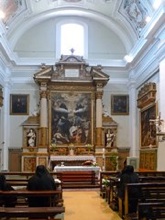
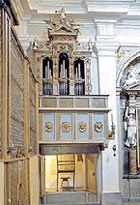
Assumption of the Virgin (1627)
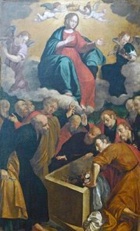
Trinity (17th century)

Death of St Benedict (early 17th century)

Panels (17th century)
Two panels on opposite walls to the sides of the high altar are attributed, somewhat uncertainly, to Bartolomeo Barbiani. They depict:
-
✴St Magnus reviving a dead baby; and
-
✴the martyrdom of St Magnus.

